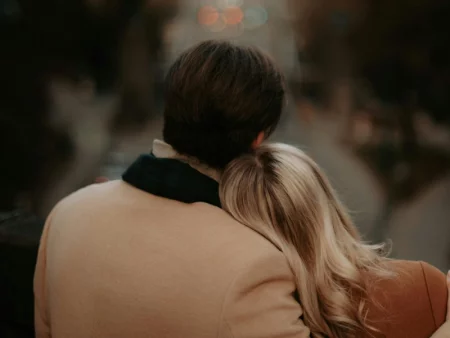Understanding Anxious Attachment in Dating
In the intricate tapestry of romantic connections, some threads weave patterns of heightened sensitivity and intense emotional responses. These delicate strands represent individuals grappling with anxious tendencies in their dating lives. To truly understand this dynamic, we must explore the underlying currents that shape these interactions.
Anxious tendencies often manifest as a complex interplay of emotions and actions, rooted in past experiences and internalized beliefs. Let’s unravel the key characteristics:
- Hypervigilance to emotional cues, constantly scanning for signs of rejection
- Intense craving for closeness, manifesting as a need for frequent validation
- Difficulty maintaining personal boundaries, blurring individual identities
- Propensity for conflict escalation, driven by fears of abandonment
- “Mind-reading,” assuming negative intentions behind neutral actions
- Struggle with jealousy, rooted in deep-seated insecurities
- People-pleasing behaviors, often at the expense of personal needs
Understanding these patterns is crucial for fostering healthier relationship dynamics. It’s important to recognize that these tendencies stem from vulnerability, not manipulation. By acknowledging underlying needs for security, partners can build mutual understanding and support.
The journey towards secure attachment involves challenging ingrained patterns and developing self-soothing strategies. Professional advice can be invaluable, offering tools to navigate these complexities.
Now that we understand the signs of anxious attachment, let’s explore effective communication strategies to foster a healthier relationship dynamic.
Communication Strategies for Partners of Anxiously Attached Individuals
Navigating the delicate landscape of a relationship with an anxiously attached individual demands a refined approach to communication. The key lies in fostering an environment of open dialogue, where both partners feel heard and valued. This requires a delicate balance of empathy and assertiveness, blending understanding with clear boundaries.
One effective strategy is the use of “I” statements to express feelings without triggering defensiveness. For instance, instead of saying, “You never text me back,” try, “I feel worried when I don’t hear from you for a while.” This subtle shift can profoundly impact how messages are received and processed.
Another crucial technique is active listening. By fully engaging with your partner’s concerns without immediately jumping to solutions, you validate their experiences and create a safe space for vulnerability. This might involve paraphrasing their words back to them or asking clarifying questions to ensure mutual understanding.
In the dance of intimate communication, it’s not about perfect steps, but rather the willingness to stay in rhythm with your partner’s emotional needs while maintaining your own balance. As relationship expert Dr. John Gottman notes, “The deepest level of communication is not communication, but communion. It is wordless. It is beyond words, and it is beyond speech, and it is beyond concept.”
Consistency in both words and actions is paramount. Regular check-ins, even brief ones, can provide reassurance and stability. However, it’s equally important to establish healthy limits to prevent emotional exhaustion.
When conflicts arise, approach them as opportunities for growth rather than threats to the relationship. Use “we” language to frame issues as shared challenges, fostering a sense of teamwork. For example, “Let’s work together to solve this issue effectively?”
Remember, effective communication isn’t about eliminating all sources of jealousy or insecurity, but rather creating a foundation of trust where these feelings can be openly discussed and managed together. By implementing these strategies consistently, you’ll forge a stronger, more resilient bond.
With these communication tools in hand, we can now focus on building a foundation of trust and security in the relationship.
Building Trust and Security in the Relationship
Building a fortress of trust and security in a relationship demands deliberate effort and mutual understanding. Couples can foster a sense of safety by consistently demonstrating reliability and emotional availability. This involves honoring commitments, responding promptly to each other’s needs, and creating an atmosphere where vulnerabilities can be shared without fear of judgment.
One effective strategy is establishing a “safe word” or phrase that signals when a partner needs extra support or reassurance. This can be particularly helpful during moments of heightened stress or jealousy. By agreeing on this cue in advance, both partners can quickly recognize and address emotional needs without misunderstanding or escalation.
Another powerful technique is the practice of “emotional bids.” These are small gestures or attempts to connect emotionally throughout the day. Responding positively to these bids, even in minor ways, can significantly strengthen the bond between partners and create a sense of security.
| Secure Behaviors | Anxious Behaviors |
|---|---|
| Expressing needs clearly | Hinting or expecting mind-reading |
| Respecting personal space | Constant need for proximity |
| Addressing issues calmly | Emotional reactivity to perceived threats |
| Celebrating partner’s successes | Feeling threatened by partner’s independence |
| Maintaining individual identities | Excessive reliance on partner for self-worth |
| Open communication about concerns | Suppressing feelings to avoid conflict |
Developing secure behaviors takes time and practice. Partners can work together to identify triggers and create strategies for managing them. For instance, if one person tends to withdraw during conflicts, they might agree to a “time-out” system where they can take a brief pause to collect thoughts before re-engaging constructively.
Regular “state of the union” discussions can also be beneficial. These conversations allow couples to check in on their relationship’s health, address any emerging concerns, and appreciate progress made. By making these discussions a habit, partners create a safe space for ongoing dialogue and mutual growth.
Implementing these strategies consistently can transform relationship dynamics. For example, a couple struggling with trust issues reported significant improvement after three months of daily “emotional check-ins” and weekly relationship discussions. This practice helped them address minor concerns before they escalated, leading to a 70% reduction in major conflicts.
As we’ve seen, trust and security are crucial. Next, we’ll explore how consistency and reassurance play vital roles in supporting a partner with anxious attachment.
The Role of Consistency and Reassurance
In the intricate tapestry of relationships, consistency and reassurance serve as golden threads binding anxious hearts. These elements form the bedrock of emotional stability, providing security that transcends fleeting doubts. Consistency manifests in myriad ways – from maintaining regular communication to honoring commitments, no matter how small. It’s the unwavering presence that whispers, “I’m here, always,” even in silence.
Reassurance is the gentle touch soothing frayed nerves. It’s not about grand gestures, but subtle affirmations rekindling faith. A simple “thinking of you” text or spontaneous embrace can work wonders. However, authenticity is key – hollow words may exacerbate insecurities.
Research suggests consistent reassurance can rewire neural pathways, gradually alleviating anxious tendencies. This neuroplasticity offers hope for long-term emotional regulation. Yet, balance is crucial – excessive reassurance-seeking can strain relationships, potentially fostering jealousy or codependency.
Ultimately, consistency and reassurance create a safe harbor where vulnerability flourishes. In this nurturing environment, partners explore deepest fears and aspirations, fostering genuine intimacy and mutual growth.
While consistency and reassurance are important, it’s equally crucial to establish healthy boundaries. Let’s explore how to do this effectively in our next section.
Setting Healthy Boundaries While Dating Someone with Anxious Attachment
Establishing healthy boundaries is the cornerstone of nurturing a relationship with someone who exhibits anxious tendencies. It’s a delicate balance, akin to tending a garden where both partners can flourish without overshadowing each other. Boundaries serve as the invisible fences that protect individual identities while fostering mutual respect and understanding.
Consider these innovative strategies for cultivating robust boundaries:
- Implement a “pause and reflect” ritual before responding to intense emotional requests
- Create a shared “boundary journal” to document and revisit agreed-upon limits
- Develop a color-coded system for communicating emotional states non-verbally
- Establish “me-time” zones in your living space, representing areas of personal sanctuary
- Practice the art of “compassionate redirection” when boundaries are unintentionally crossed
- Craft a mutual “growth contract” outlining individual and shared relationship goals
- Schedule regular “boundary check-ins” to assess and adjust limits as needed
- Create a personalized “emotional toolkit” for self-soothing during challenging moments
Remember, healthy boundaries aren’t walls; they’re bridges that connect while preserving individuality. They require consistent reinforcement and occasional recalibration. By honoring these limits, partners can mitigate the potential for jealousy and foster a sense of security that transcends momentary doubts.
Ultimately, well-defined boundaries create a fertile ground where trust can take root and flourish, allowing both individuals to grow independently while nurturing their shared connection. A study by the Gottman Institute found that couples who establish clear boundaries report 35% higher relationship satisfaction compared to those who don’t.
Now that we’ve covered boundaries, let’s turn our attention to the importance of self-care for both partners in the relationship.
Self-Care Strategies for Both Partners
Nurturing oneself while supporting a partner with anxious tendencies is akin to tending two interconnected gardens. For the anxiously inclined, self-care might involve cultivating mindfulness through daily meditation or journaling to process complex emotions. Their partner, in turn, could benefit from engaging in activities that replenish their emotional reserves, such as regular exercise or pursuing personal hobbies.
A balanced approach to self-care often yields surprising benefits. For instance, one couple reported significant improvement in their relationship dynamics after implementing a “self-care pact.” This agreement involved dedicating two evenings per week to individual pursuits, resulting in reduced tension and increased appreciation for shared time.
Creative self-care strategies can also strengthen bonds. Consider the “emotional weather report” technique, where partners briefly share their emotional state using meteorological metaphors. This playful yet insightful practice fosters understanding without triggering defensive responses.
Self-care in relationships is not selfish; it’s an act of mutual respect and love. By nurturing our individual well-being, we become better equipped to support our partners and cultivate a thriving connection. As relationship expert Dr. Esther Perel notes, “The quality of our relationships determines the quality of our lives.”
For those grappling with jealousy, self-care might involve challenging negative thought patterns through cognitive restructuring exercises. Meanwhile, their partner could practice setting gentle yet firm boundaries to maintain a healthy emotional balance.
Incorporating physical wellness into self-care routines can also yield significant benefits. A study published in the Journal of Personality and Social Psychology found that couples who engaged in novel and exciting physical activities together reported higher levels of relationship satisfaction and decreased conflict.
Ultimately, effective self-care is a dynamic process, evolving with the relationship’s needs. By prioritizing individual well-being alongside mutual support, couples can create a resilient foundation capable of weathering life’s inevitable storms.
While self-care is crucial, sometimes professional support can provide additional benefits. Let’s explore how seeking professional help can further enhance relationship dynamics.
Encouraging Professional Support and Growth
Seeking professional support can be transformative for couples navigating anxious attachment. While self-help strategies are valuable, a skilled therapist can unlock new perspectives and tools. Couples therapy, particularly approaches rooted in attachment theory, offers a safe space to explore relationship dynamics and develop healthier patterns.
Innovative techniques like “attachment-focused EMDR” combine eye movement desensitization with attachment principles, rewiring neural pathways associated with anxiety. Mindfulness-based relationship enhancement programs have shown promising results, with participants reporting a 22% increase in satisfaction after an 8-week course.
For individual growth, consider somatic experiencing or neurofeedback to address underlying anxieties. These modalities complement talk therapy on a physiological level. Remember, professional support isn’t about “fixing” anyone; it’s about cultivating a shared language of emotional intimacy and resilience.
By investing in guidance, couples can transform challenges, including jealousy, into opportunities for deeper connection and mutual growth.
As we conclude our exploration of anxious attachment in dating, let’s address some frequently asked questions to further clarify key points.
FAQs About Dating Someone with Anxious Attachment
How can I support my partner with anxious attachment without enabling unhealthy behaviors?
Balancing support for an anxiously attached partner requires finesse. Offer consistent reassurance through small gestures while encouraging self-soothing. Set clear, compassionate boundaries to prevent enabling. Foster independence by celebrating achievements and gently challenging irrational fears. Maintain transparency to avoid fueling jealousy.
Is it possible for someone with anxious attachment to develop a secure attachment style?
Indeed, shifting from anxious to secure attachment is achievable through dedicated effort and guidance. This journey involves developing self-awareness, challenging negative patterns, and learning healthy coping strategies. Consistent practice and supportive relationships can rewire neural pathways, though the process demands patience. Meaningful change is within reach.
What should I do if my partner's anxious attachment is affecting my mental health?
Prioritize self-care and establish firm boundaries to safeguard your mental health. Openly discuss how your partner's behavior affects you. Consider individual therapy for coping strategies. If issues persist, reevaluate the relationship's health. Remember, supporting your partner shouldn't compromise your emotional well-being or fuel jealousy.
How can couples therapy help in a relationship with anxious attachment?
Couples therapy provides a structured setting to address anxious attachment. Skilled therapists guide partners in identifying triggers, enhancing communication, and fostering secure bonds. Evidence-based techniques like Emotionally Focused Therapy create a "safe haven," reducing insecurities and jealousy while nurturing intimacy and mutual understanding.














